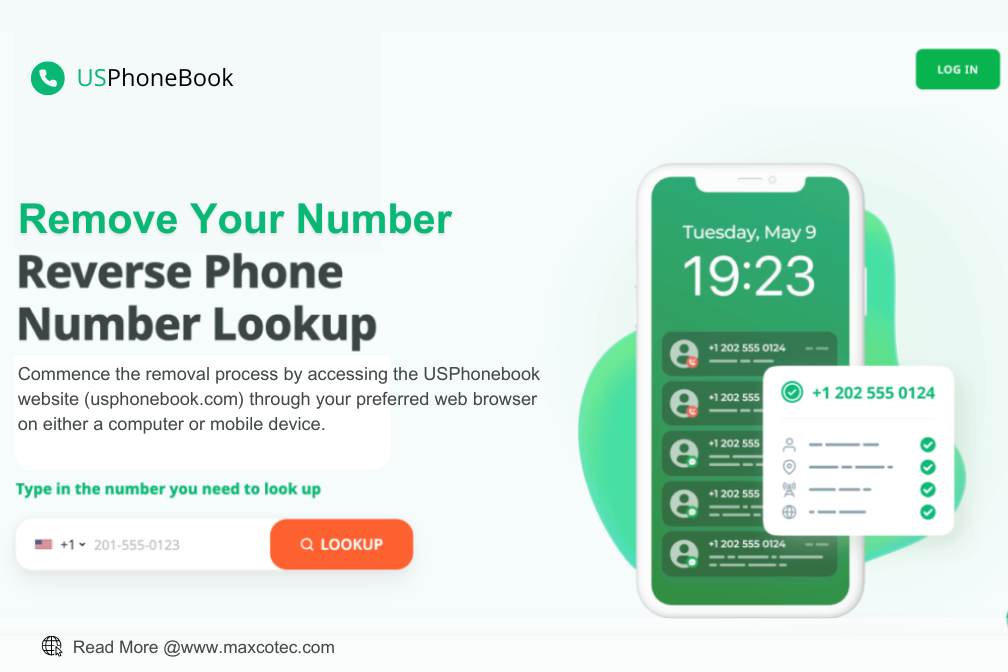Key Features:
- USPhonebook is a platform that aggregates public records, including personal contact details, presenting potential privacy risks in the digital age.
- Removing oneself from USPhonebook is essential for preserving privacy, mitigating security risks like identity theft, preventing unwanted contact, and asserting control over personal data.
- The removal process involves navigating to the USPhonebook website, initiating a search for your listing, undergoing a verification protocol, submitting a removal request, complying with instructions, and confirming the removal.
- Tips include being patient during the removal process, regularly monitoring for any reappearances of your information, exploring other directories for removal, and being cautious about sharing personal details online.
- Common concerns regarding USPhonebook opt-out, such as its cost, duration of removal, permanence of removal, required information, impact on accessing other services, and the possibility of opting out on behalf of someone else, are addressed.
- Removing oneself from USPhonebook is crucial for safeguarding privacy in the digital realm, emphasizing the significance of following the removal process diligently and understanding its implications for personal security.
Picture this: a digital realm where your details float freely, ripe for the taking by anyone with an internet connection. That’s the reality of USPhoneBook, a treasure trove of public records housing your most intimate information. But fear not! In this article at Tech Blogs In USA, we’ll uncover the secrets of opting out, helping you easily take back your privacy. Technological progress isn’t just for outer space anymore; it’s now in your digital hands. Get ready to start taking control.
Understanding USPhonebook

USPhonebook serves multiple purposes, including acting as a digital archive and aggregating public records from various sources. Its primary role is to provide a centralized and comprehensive database of contact information. While some records fall under the public domain, the potential accessibility of personal details on social networks poses a significant risk, particularly in today’s era marked by digital vulnerability.
Why Remove Yourself?
- Privacy Preservation: The desire to shield personal contact details from indiscriminate access underpins the decision to opt out of platforms like USPhonebook.
- Mitigating Security Risks: Exposing personal information leaves individuals susceptible to identity theft, fraudulent schemes, and other cyber threats.
- Preventing Unwanted Contact: Publicly available contact information often attracts unsolicited communications, posing a nuisance and potential risk to personal safety.
- Exercising Control: Asserting control over one’s data is fundamental to maintaining autonomy and security in the digital realm.
HuraWatch – Watch Free Movies and TV Shows Online
Step-by-Step Removal Process – A Detailed Walkthrough

Step 1: Navigating to the USPhonebook Website
Commence the removal process by accessing the USPhonebook website (usphonebook.com) through your preferred web browser on either a computer or mobile device.
Step 2: Initiating the Search
Utilize the search functionality provided by USPhonebook to locate your listing within their database. Input your name, alongside relevant location details such as city and state, to pinpoint the accurate entry.
Step 3: Verification Protocol
Upon identifying your listing, prepare to undergo a verification procedure to authenticate your identity. This verification step is imperative to ensure that the removal request originates from the rightful owner of the information.
Step 4: Submission of Removal Request

Navigate to the designated section on the USPhonebook website that facilitates removal requests or opt-out mechanisms. This segment may be accessible either directly from your listing or within the website’s privacy policy provisions.
Step 5: Compliance with Instructions
Follow accurately the instructions specified by USPhonebook to finalize the removal process. This may entail completing a form, furnishing additional particulars, or validating your request via email correspondence.
Step 6: Confirmation and Documentation
Following the submission of your removal request, anticipate receiving confirmation from USPhonebook once your information has been expunged from their database. Retain any confirmation emails or documentation received for future reference and verification purposes.
AARP Games – Top 15 Games and Everything to Know
Recommendations for Enhanced Privacy Protection

Here are some practices you can follow to ensure your online privacy:
- Exercise Patience: Acknowledge that the removal process may necessitate a reasonable timeframe for completion. Allow a grace period of several days to facilitate the removal of your information from USPhonebook’s database.
- Regular Monitoring: Adopt a proactive stance by periodically monitoring USPhonebook and analogous platforms to ascertain that your details remain absent from public visibility.
- Explore Alternative Directories: Recognize that USPhonebook represents merely one facet of the broader landscape of online directories. Consider extending the removal process to encompass other analogous platforms to fortify your privacy defenses comprehensively.
- Adopt Proactive Measures: Moving forward, adopt a discerning approach to sharing personal contact details online. Leverage privacy settings on social media platforms and exercise discretion when divulging sensitive information.
FAQ About Opting Out of USPhoneBook

Navigating the opt-out process of USPhoneBook may raise some questions. Here, we answer common concerns in straightforward terms to help you understand and proceed confidently.
-
What is USPhoneBook, and why should I opt out?
USPhoneBook gathers public data such as phone numbers and addresses. Opting out removes you from their database, safeguarding your privacy and reducing unwanted communication.
-
Is opting out from USPhoneBook free?
Yes, it’s typically free to opt-out from USPhoneBook. They offer this service at no cost to individuals who want to remove their information.
-
How long does it take for my information to be removed after opting out?
It varies, but usually, USPhoneBook processes opt-out requests quickly. While some changes may happen right away, it’s best to give it a few days to be sure everything’s been taken care of.
-
Will opting out remove my information permanently?
Yes, opting out should permanently remove your information from USPhoneBook. However, it’s wise to check back periodically to ensure your details haven’t been re-listed.
-
What information do I need to provide to opt out successfully?
To opt-out successfully, you’ll typically need to provide identifying information, such as your name, address, and phone number. This information helps USPhoneBook locate and verify your listing in their database before processing your removal request.
-
Will opting out affect my ability to access other services or platforms?
Opting out from USPhoneBook should not affect your ability to access other services or platforms. This process is specific to USPhoneBook and does not impact your presence on other websites or databases.
-
Can I opt out on behalf of someone else?
In most cases, individuals can only opt-out on behalf of themselves. USPhoneBook usually requests users to authenticate their identities to ensure that a removal request is not initiated by a fraudster who has no right to remove the information.
-
What if I keep getting unwanted calls or messages after opting out?
If you keep getting messages you don’t want even after opting out from USPhoneBook, it might mean others can still find your info elsewhere. If that happens, think about trying more ways to keep your privacy safe and watch your online activity closely.
Claude AI Overview – Everything You Need To Know
Conclusion
Taking steps to remove yourself from USPhonebook is crucial for reclaiming your privacy. Carefully review the guide to understand the steps and feel confident to follow them without revealing your information. These steps underscore the importance and priority of security in today’s digital world.






